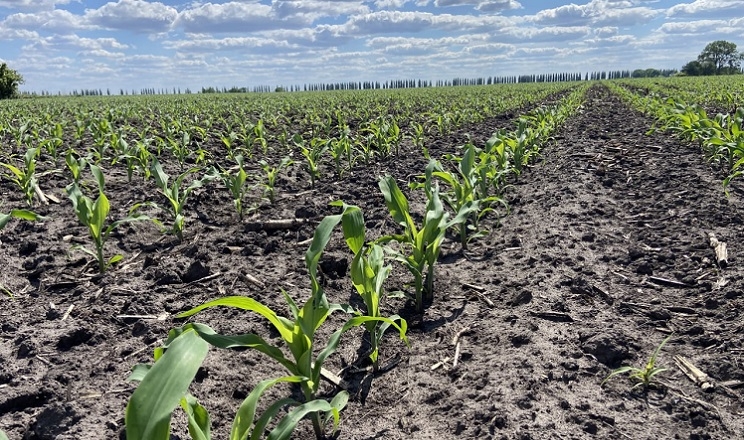Wet April outlook offers mixed benefits for US winter wheat, corn

U.S. winter wheat crop conditions have finally returned to more normal levels following two seasons marred with significant drought, boding well for harvest prospects.
At the same time, U.S. farmers have begun planting their corn crop, though a wetter outlook for April could limit both the planting pace and potential acreage expansion.
In its first crop progress report of the spring season, the U.S. Department of Agriculture on Monday pegged 56% of the U.S. winter wheat crop in good or excellent (GE) condition, slightly below the trade guess of 57% but significantly above the 28% and 30% seen this week in the last two years.
The 56% GE is identical to the same week in 2019, the last harvest that featured strong yields, and it represents a 6 percentage-point improvement from late November, the last time USDA issued national wheat ratings.
Early spring crop conditions much above 50% GE as well as any improvement since the late fall typically present a yield potential floor somewhere around the long-term trend. The exception was 2007, a year notorious for erratic weather worldwide, resulting in poor U.S. wheat yields.
Current conditions are within range of 2016, the harvest that still holds the national yield record. Some consider 2016 a climatological analog for 2024 with a strong El Nino expected to fade to La Nina by mid-year. El Nino often presents wet winter and spring conditions in the southern U.S. Plains, which grows the nation’s top wheat variety, hard red winter.
Precipitation in top wheat grower Kansas was less than 50% of normal in both March 2016 and 2024, though April 2016 featured near-record precipitation across the state. U.S. government forecasts suggest a wetter-than-normal lean through mid-April for most winter wheat areas.
The U.S. government’s full April outlook shows the month could be wetter across the heart of the Corn Belt, particularly in the east. The moisture shot is much-needed but could slow spring planting if prolonged.
As of Sunday, U.S. farmers had planted 2% of their corn, a normal portion. Typically, about 5% is planted by mid-April and closer to 30% is in by month’s end, but more than 50% has been done in April in some of the fast years.
Many of those fast corn planting years featured larger corn acres than were reported in USDA’s March survey, something the market may be banking on this year, potentially to a large extent. That survey last week showed 2024 corn plantings at 90 million acres, well below the trade guess of 91.8 million.
The last time widespread, extensive delays plagued U.S. corn planting was in 2019, though excessive rainfall was a problem in May and June, not April. El Nino conditions were also in place in spring 2019.
USDA last week pegged U.S. wheat plantings down 4% on the year but the winter variety down 7%, meaning good yields are needed for this year’s winter crop to outpace last year’s. Despite awful crop ratings a year ago, final 2023 winter wheat yield came in well above initial projections due to stellar results in many soft red winter wheat states.
Read also
Wheat in Southern Brazil Impacted by Dry Weather and Frosts
Oilseed Industry. Leaders and Strategies in the Times of a Great Change
Black Sea & Danube Region: Oilseed and Vegoil Markets Within Ongoing Transfor...
Serbia. The drought will cause extremely high losses for farmers this year
2023/24 Safrinha Corn in Brazil 91% Harvested
Write to us
Our manager will contact you soon



